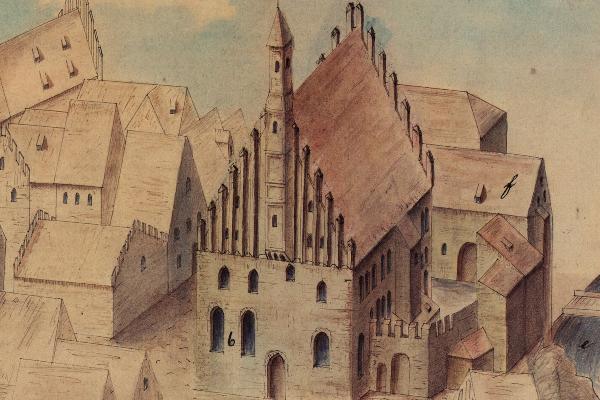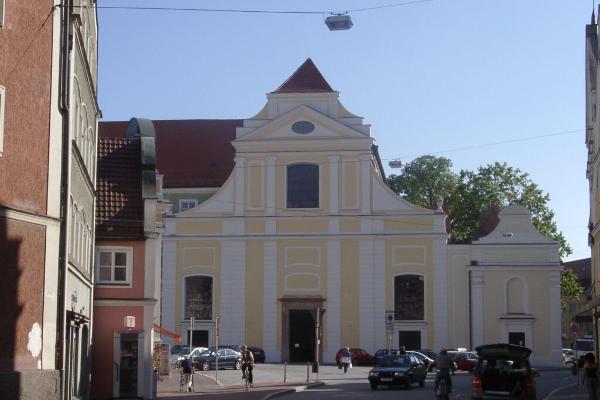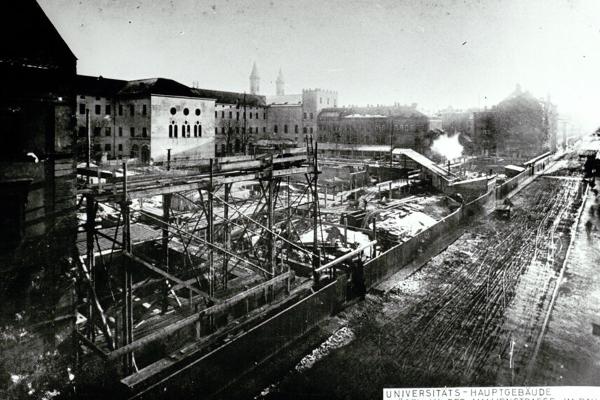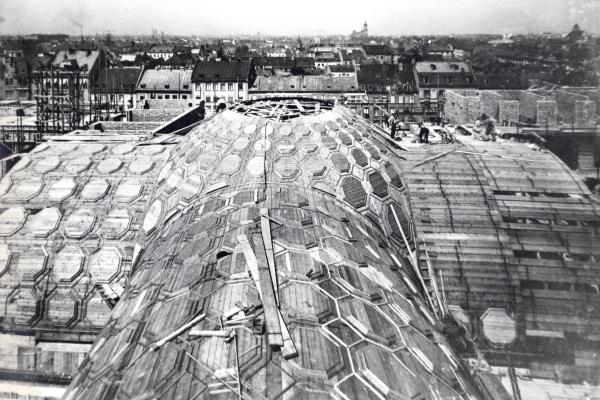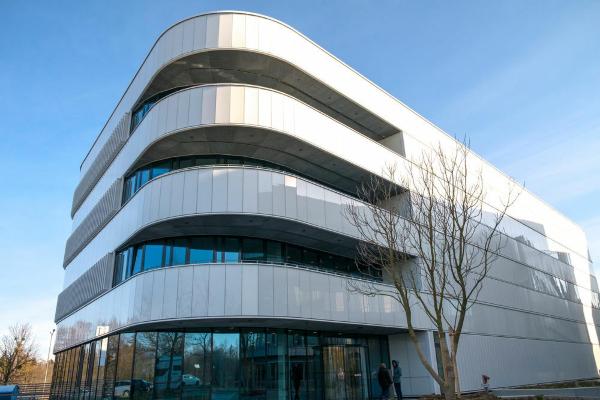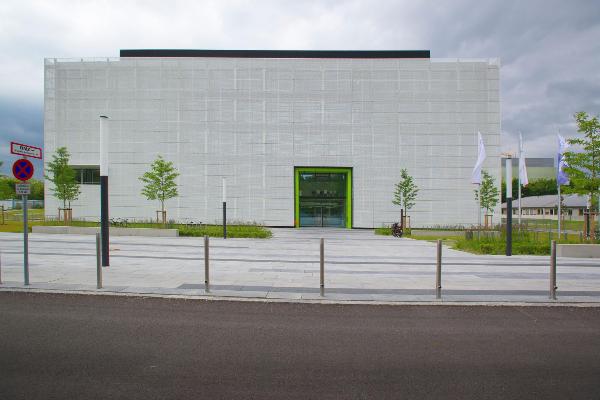The Hohe Schule zu Ingolstadt found its first home in the Prebendary’s House (Pfründnerhaus) and the University was based there from 1472 until 1800. In 1736 the Medical Faculty moved into a new building near the Botanic Garden. It took 13 years to construct, and included an Anatomy Theater.
In Landshut the “Ludovico-Maximilianea” was first housed in temporary accommodation but, with the secularization of ecclesiastical property in 1803, the former Dominican Monastery became available. In addition, the University acquired the Aula of the Jesuit College, as well as sections of the Franciscan Monastery. The Georgianum was accommodated in the Convent of the Holy Cross, and the Medical and Surgical Departments in the local hospital. The Kapuzinergraben in the town served as a riding arena, and one wing of Trausnitz Castle was turned into an astronomical observatory.
On its relocation to Munich in 1826, the University was accommodated in St. Michael’s, formerly the city's Jesuit College. Fourteen years later, LMU moved into the present Main Building, which was designed by Friedrich von Gärtner. As the 19th century progressed, increasing specialization and the resulting need for new institutes, clinics and academic departments made expansion inevitable. The Medical Departments were concentrated around the Sendlinger Tor, where the Institutes of Ophthalmology, Psychiatry and Dentistry were built. In 1908 an Orthopedic Clinic was erected in Harlaching, while Natural Science departments were dispersed around the city. The Chemistry Laboratory made famous by Adolf von Baeyer was located on Sophienstrasse. The Department of Physiological Chemistry was sited next to the Botanic Garden, and moved to a new building on Karlstrasse in 1915. The Department of Mathematics and Physics, on the other hand, was accommodated in an extension added (1892–1894) to the Main Building, while the Humanities took up much of the Main Building itself. Its northern wing was extended along Adalbertstrasse in the years 1897/98. Further extensions and modifications followed in 1905–1909, when the Atrium and Auditorium Maximum were added to Gärtner’s structure. In 1899 the Department of Forestry moved to new quarters on Amalienstrasse, while a new home for the Department of Veterinary Medicine was finished on Königinstrasse in 1902.
The history of Veterinary Medicine in Munich's English Garden is now drawing to a close. Many of the Faculty's facilities have already moved to a new site in Oberschleissheim northwest of the city proper. They include the veterinary clinics for birds, amphibia and reptiles, and for pigs and ruminants. A new set of lecture halls has been built, while the clinic for horses and a new Institute of Microbiology are under construction. The main reason for the transfer of the Faculty is the lack of space on the present site, and relatively poor accessibility for animal-lovers and their pets. the vacant site on the edge of Munich's largest park will be filled by the Faculty of Physics. Indeed, the new Nano-Institute on Königinstrasse is already up and running.
By the end of the Second World War, the University's Main Building, the hospitals in the inner city and the Natural Science Institutes had suffered severe damage. This prompted the suggestion that the University should be moved out of the downtown area of the city altogether. In the end, the advocates of a repair-and-rebuild strategy prevailed. As part of this plan, the University Library was moved into what was known as the Salinenbau adjacent to the Main Building. The hospitals in the city center were rebuilt, although some were later relocated to the new Medical Center in Grosshadern on the outskirts of Munich. Since the reconstruction phase in the immediate postwar period, the trend toward relocation has continued. As a result, LMU has lost its classical form as a campus university. The Accelerator Laboratory built in cooperation with the Technical University (TU Munich, TUM) was opened on a new Physics Campus in Garching in 1972. In 1992, the Faculty of Forestry moved to Weihenstephan, and became part of the TUM. The Faculty of Chemistry and Pharmacy was transferred to Grosshadern in 1999, and the Faculty of Biology took up residence in the new Biocenter in Martinsried in 2009. Six years later, the Biomedical Center (BMC) was built beside it. The BMC was conceived as a Center for Applied Cell Biology, and its research focuses on the investigation of the plasticity of cellular differentiation programs. A better understanding of these programs - their development, implementation and adaptability, i.e. their potential and their limitations - could lead to new therapeutic strategies. in this sense the BMC represents an attempt to bridge the gap between basic research and its clinical application.
In 2016, the Center for Molecular Biosystems (BioSysM) went into operation on the Grosshadern Campus. This unit focuses on systems biology, a relatively new discipline, and brings together research groups from several fields. This in turn stimulates conceptual and technological advances that can lead to unexpected synergetic interactions.
Die Große Aula und die Bayerische Verfassung
Für die Initiative "Orte der Demokratie" des Bayerischen Landtags führt LMU-Präsident Professor Bernd Huber durch die Große Aula, in der 1946 die Bayerische Verfassung beschlossen wurde.
2.34 | 4 Nov 2021 | ©Bayerischer Landtag

